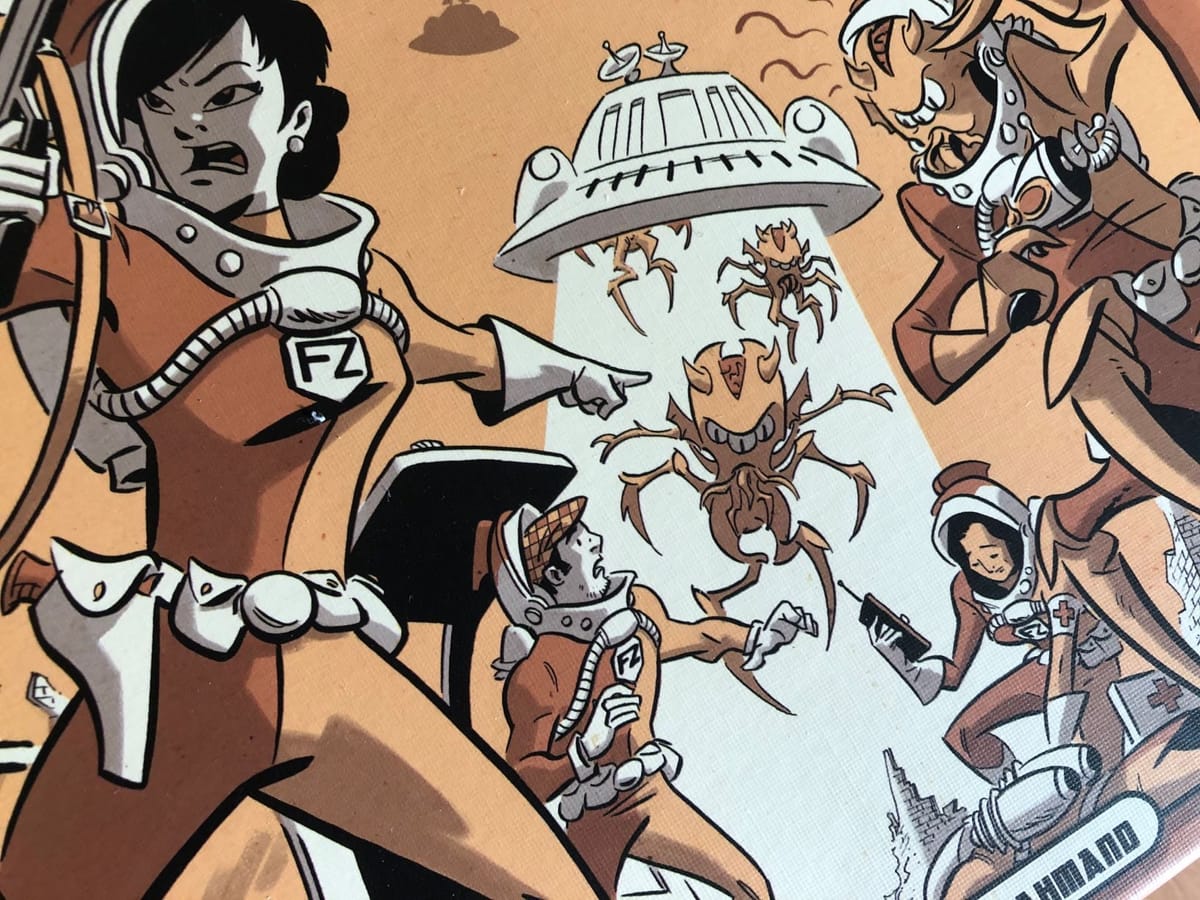
With the earth burning, the skies full of hostile ships, and a coalition of enemies, you are humanity’s last hope. Hope is slim in Faza, a cooperative science fiction game that sees you and up to three friends attempting to destroy the three enemy Motherships that have been plaguing our planet for two years of hell. Among the last human insurgents left, you are joined by Rebel members of the Faza species who wish to join your cause, giving you an edge you have never had before: the knowledge necessary to use alien technology and take down the ships that have been dropping more shock troops, terraforming the planet, and killing your team. Time is running out before you are all hunted down, but with a solid strategy and a bit of luck you may make your way through.
Faza (phonetic transliteration of the Farsi word for “outer space”), is a strong first showing for designer Benjamin Farahmand. Despite a few rough edges, it manages to be a tense strategic challenge with high replay value due to its modularity. That modularity comes through in several ways; the map is randomly generated, the characters are meaningfully different, and the enemy’s response to your actions can vary greatly from game to game. To a degree this modularity causes the game to run into some issues, but the foundation is strong.
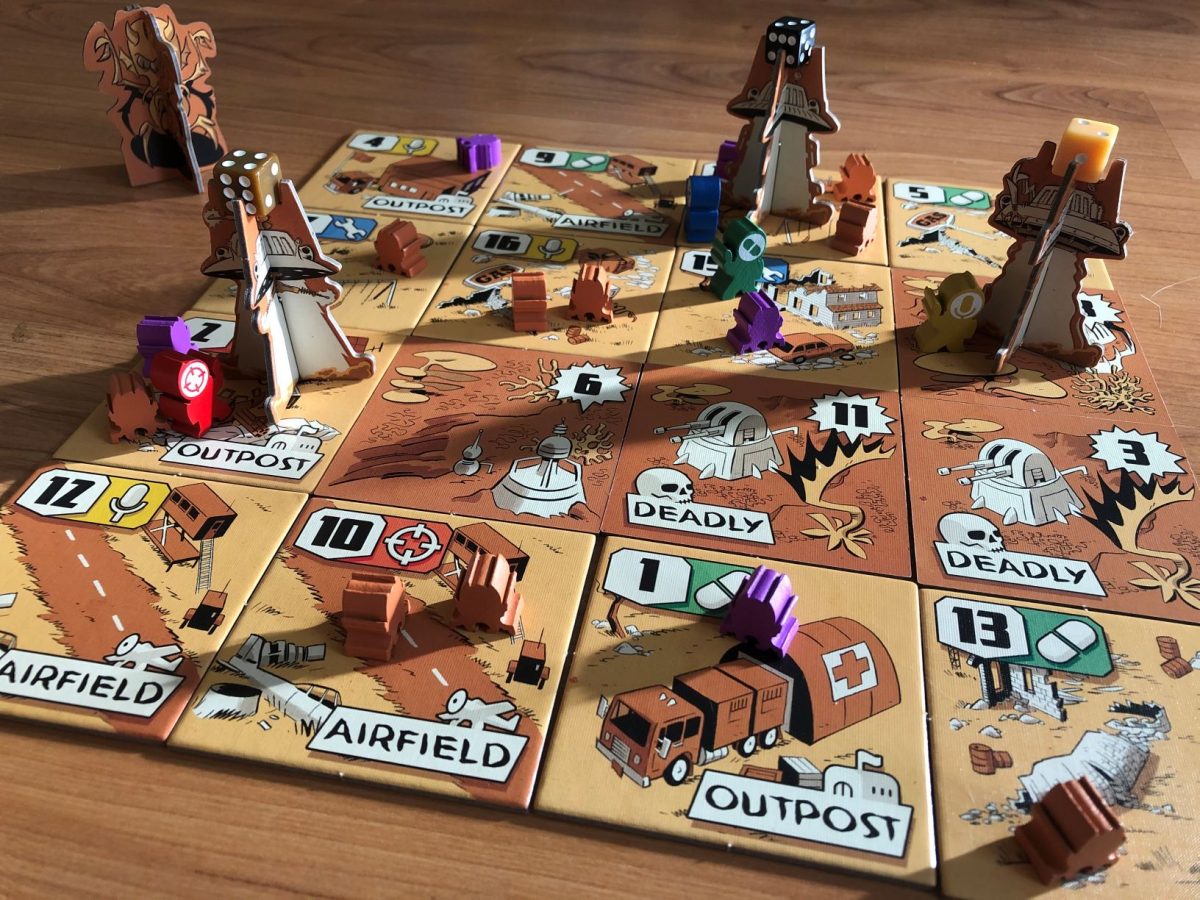
The game’s aesthetic takes strong cues from the height of the alien invasion craze in media, its flying saucers and angular spacesuits laying on a generous but welcome layer of retrofuturism. The game has a limited color palette, mostly relying on the ochre of desert sand, I think to suggest the full extent of the Faza’s destructive efforts on Earth. Colors usually signal important mechanical information, and are always associated with human-aligned features. Overall the style comes through very strong and instills a menace along with the game’s strategic fun.
Faza’s components are high quality, efficient, and quite pleasing to the eye. The map’s board stock is quite nice, and the game manages to communicate a lot with some cardboard squares. The Drone/Rebel silhouettes are intricate yet immediately recognizable, as are the player tokens. The Motherships are made up of interlocking cardboard slats that make for easy storage but also hold dice to represent their current health, and each has details on their hull to denote their specialized purposes. The only downsides as far as components are concerned are the cards, which are of slightly lower quality, and the box itself. The cards are a little thin, and I fear likely to wear down after extended use. The box isn’t the best for all of the components, as it doesn’t have specialized holding chambers for the various map or reference tiles. With a plastic bag or two, this becomes a total non-issue, so it ends up as at worst a minor inconvenience, as otherwise, some pieces will toss themselves around the inside of the box.
The rulebook is one of the more direct and concise I’ve seen, and communicates itself very well, with one odd exception. The rules for Mothership combat, a core goal of the game, are referenced in the game rules, but only actually explained on a separate tile. It’s not a huge annoyance, but it is curious that this would not be included in the book. The tiles for each Mothership are in-game components, and what you use to track their actions, and each player has their own tile laying out how to perform Mothership combat. It just feels odd that this information is not actually present in the rules text.
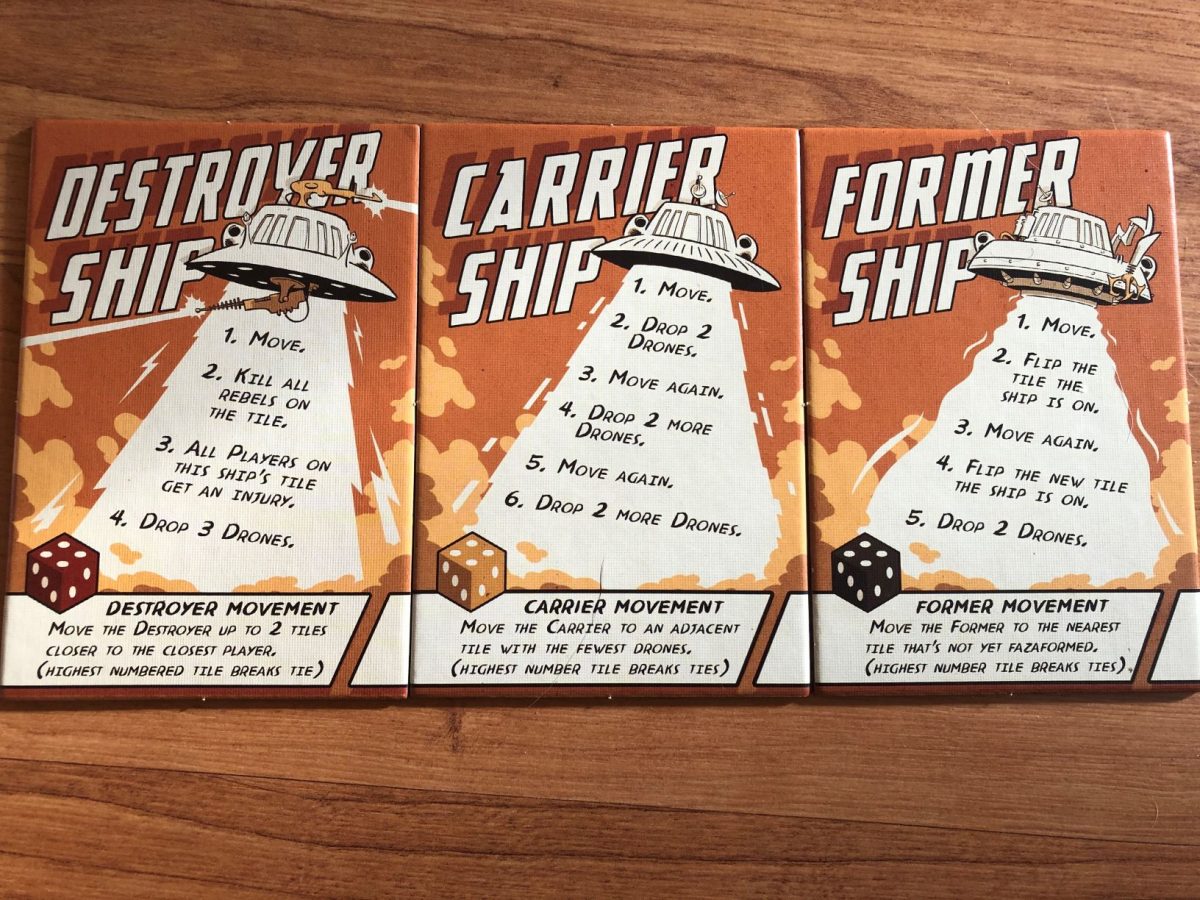
To start the game, you will shuffle the 16 map tiles together to form a random 4×4 map, with each Mothership starting with a complement of drones on specified tiles and dice to track their health. Players begin on their unique Outposts, also randomly distributed. You will also shuffle Faza event cards to form a random deck.
Players first choose not characters, but areas of focus between Medical, Political, Tactical, or Technological. Each area has its own player deck, as well as access to one of two characters. Each character begins with two Rebels each on their starting outposts of 1-4. Every tile in the game is also broken up between these four types, and if your character is on a tile of their type they get a bonus in all combats. As you can see, this leads to a huge variation in how games begin. Maybe the Motherships are spread far away from your Outposts, or maybe they are right on top of you. Movement and placement are crucial to success, and this could start you out with an enormous logistical disadvantage or start you out with a significant boost. Especially because certain characters are built specifically around movement, this disparity can make a huge difference in how you use your actions and how useful certain characters end up being.
As you would expect, these areas of focus make a big difference in your utility in the game, and it’s worth thinking about how you are going to build your team together. The characters not only vary greatly in terms of what their strengths are but how they integrate together. Movement, healing, offense, and support are all crucial on their own, but you will see as you play subsequent games that you can get much more out of each character if using their abilities together with others. Each character type has four cards with two abilities each, and specific characters also have special abilities to make them stand out. During your turn, you can use any of your player cards once, engage in combat, use a character’s skill, purchase Rebels, or order Rebels to attack the Mothership, as many times as you are willing and able.
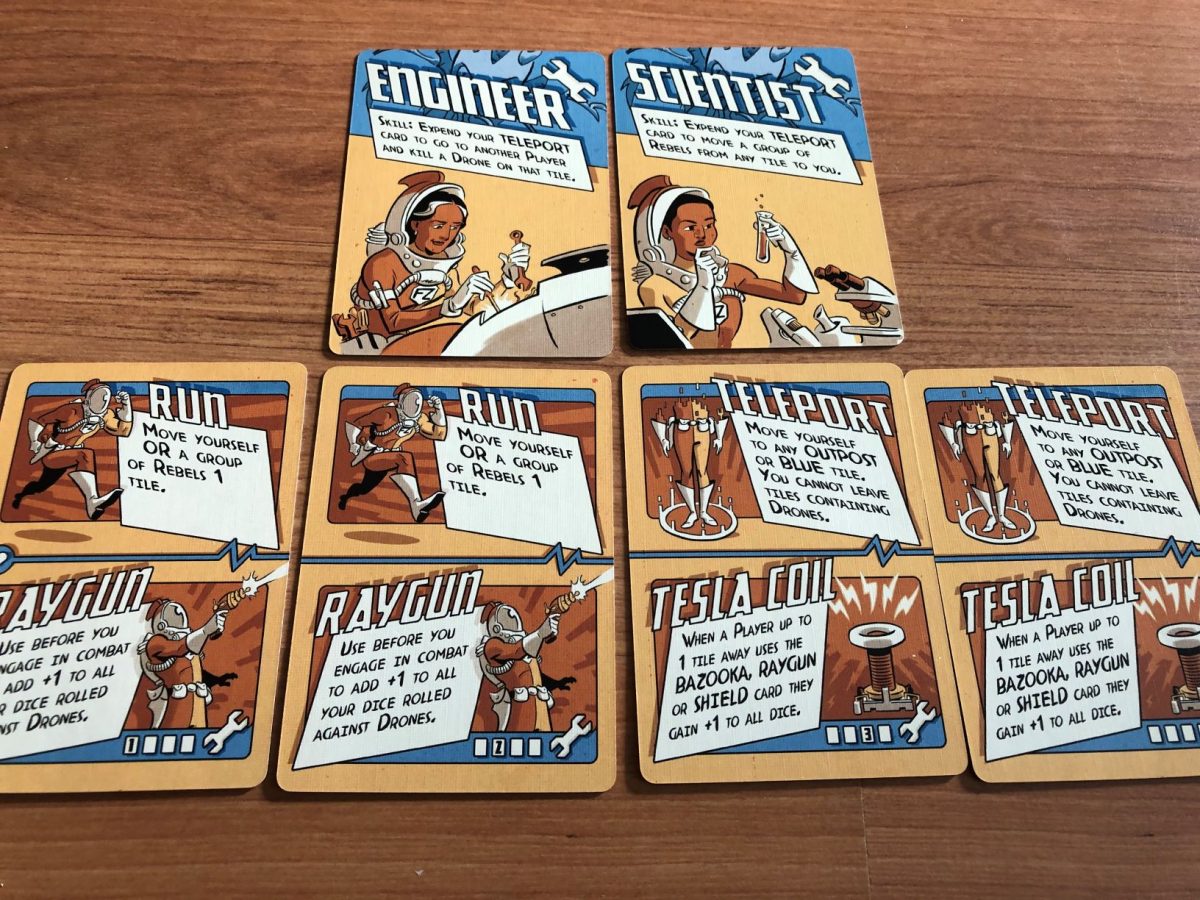
Players take all turns simultaneously, and once their actions are complete the enemies will activate. I have seen distaste for games that allow for simultaneous turns because they encourage players to tell others what to do, but whether this is a game design issue or a player issue is an academic argument better suited for elsewhere. In my experience, it enhanced the strategy by giving us the freedom to choose how to act, without forcing anyone to do anything in a particular order, and I don’t feel it makes the game weaker. This also allows you to use your abilities to boost one another at any time, which with a game this difficult is very necessary. There is a lot to manage in Faza, and a lot of approaches to managing its various threats, so you will want to stop and think about how to act before anyone does anything. You can set up strong attacks with many actions, leaving yourselves open to a response from the Motherships, or take some risky moves but give yourself room to clean up after the fact.
Your team will be beset not only by the Motherships but the Drones they bring as ground troops. For drone combat, you roll a die for each drone on the tile, with a +1 bonus on each die if it matches your character’s area of focus. A roll of 4+ kills a drone, which you keep as currency to purchase Rebels or for certain events. A roll of 3 or lower injures you, flipping your lowest face-up player card to face-down and giving you a different ability. Any Rebels on the tile will take damage for you, expending them. You can heal at outposts, but your character dies and you lose the game if you lose all 4 of your player cards. You can recruit Rebels at outposts, and each map tile has a maximum limit of three Rebels, and it is necessary to expend Rebels to board and damage Motherships, once their locations are cleared of Drones.
When the enemies activate, Drones attack, removing themselves to deal damage first to Rebels and then the player. You then also add one Drone per space with players. Finally, for each player, you activate one of the Motherships, determined by a tracker, and pass the tracker to the next ship.
During Mothership combat, they will draw event cards, which can be minor, beneficial, or devastating. These cards inflict effects on the tile where they were drawn as well as across the entire game. You can pay down long term effects with points, forcing you to balance Rebel generation and preparing for future events. Sometimes these events (or the efforts of the Fazaformer Mothership) will terraform squares, causing damage to characters when moving through them.
Despite the many tools at your disposal, Faza is a highly difficult game. Even Easy mode will give you a decent test of skill. If you play on Hard, you should expect to lose, which you almost certainly will. I’m not sure about the wisdom of including this mode in the game, as the level of punishment it delivers is extreme, and your chances of winning slightly. If you do succeed, it will be because of intelligent plays by you and your team, as well as what may be a frustrating amount of luck.
Because of the randomness in combat, enemy events, and the map, the randomness can make a huge difference in how you experience Faza from game to game. Even on the same difficulty, the variation can make the game turn from a slog, with all of you on your back foot out the gate, or a breeze as beneficial turns of fate put everything where it needs to be. Often things are balanced with a reasonable difficulty curve, but this isn’t always the case. While there are many ways of minimizing risk, and this is much of a point of the game, the swings still go too far too often for my taste. The designer has admitted this is a slight weakness of the game, and offered some usable suggestions about house-ruled solutions. I would recommend checking them out and experimenting if you agree with me that tweaking the difficulty would improve the game.
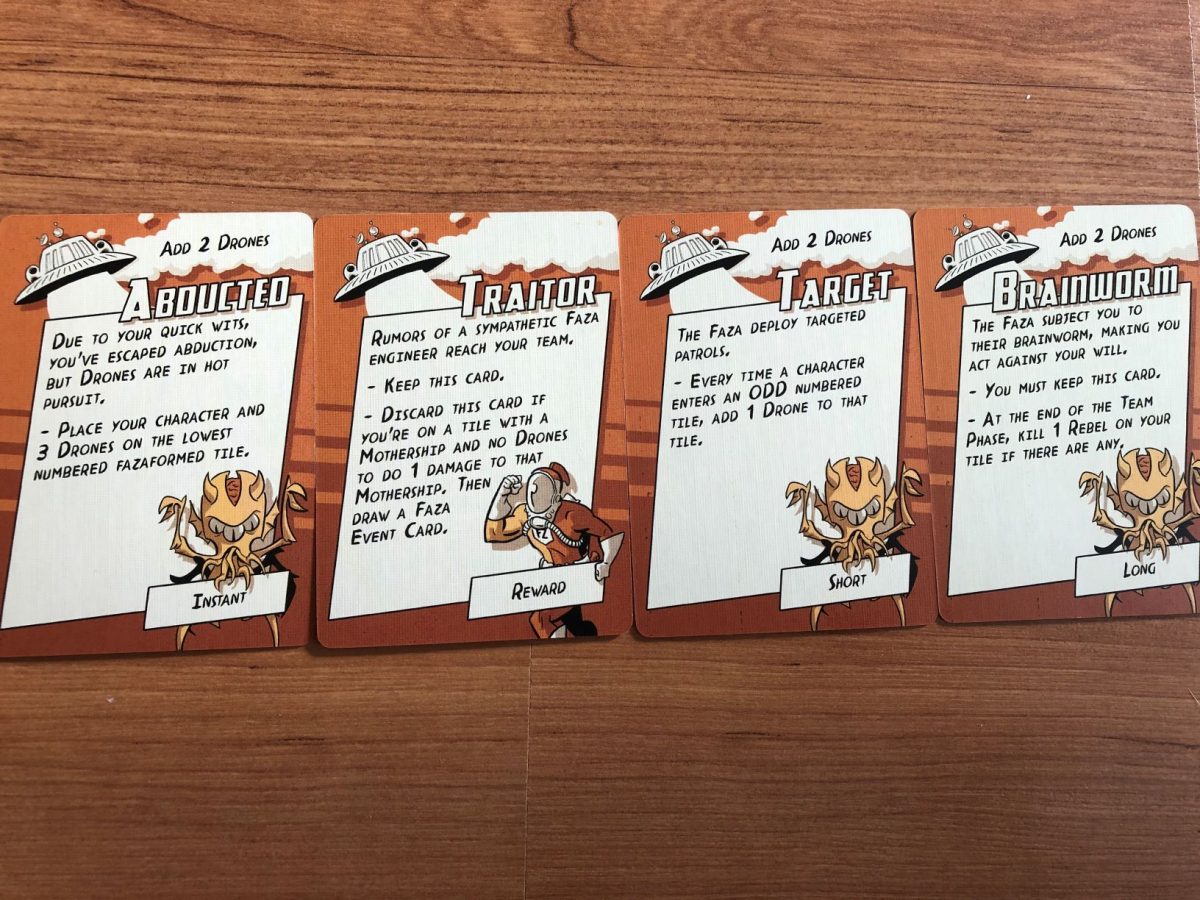
Faza’s moment to moment mechanics aren’t the most advanced, but that doesn’t stop it from being a satisfying or challenging game, due to the number of threats you have to manage at a given time. Your decisions do have weight, and you will have to think carefully before taking action. You have to make sure you aren’t overloaded with drones or terraformed squares, but also that your characters survive. This makes the choice of which Mothership to assault and in what order a crucial one. Each attacks one of these loss conditions, but not all at once. Denying an action to one of them can make a huge difference, but triggering multiple events at once can be extremely lethal. The entire game is a tense struggle to keep things from deteriorating, with a slower build than Pandemic, where everything can explode at once. While you’re in the swing of things, working together to maximize your strengths and respond to emerging threats, you find yourselves thrilled with the possibilities. The game moves with a quick pace, but one that keeps the pressure up and challenges you to maximize your options if you want to survive.
With a price of $45 shipping included, it’s a bit of an investment but not unreasonable for the amount of play you can get from this game. With a ton of variety, some well thought out components, and interesting decisions at its core, I see myself diving back into Faza again quite a few times, and soon.
Faza
Great
Faza is a tense struggle for survival against odds that are stacked against you. The mechanics are not the deepest and its randomness is occasionally irksome, but the underlying game offers some intense decision points and great incentive to work together with your friends. For a medium weight co-op, you will find a lot to offer in this small package.
Pros
- Components that are both creative and aesthetically pleasing
- Many types of threats and abilities make for diverse gameplay
- Characters integrate well together, encouraging experimentation
Cons
- Randomness can swing too far from easy to difficult
- The rulebook has some odd omissions
- You will want to retool the storage to make it most efficient
